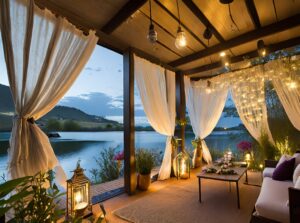As an Amazon Associate, I earn from qualifying purchases.
Page Contents
ToggleIntroduction
In the world of interior design, organic design has been gaining popularity, offering a unique and sustainable approach to decorating spaces. Organic design embraces the use of natural materials, harmonious color palettes, and biophilic elements to create spaces that are not only aesthetically appealing but also promote health and well-being. In this article, we will explore the principles, benefits, key elements, and challenges associated with organic interior design. We will also delve into case studies, trends, and expert insights, offering a comprehensive guide to incorporating organic design in different spaces.
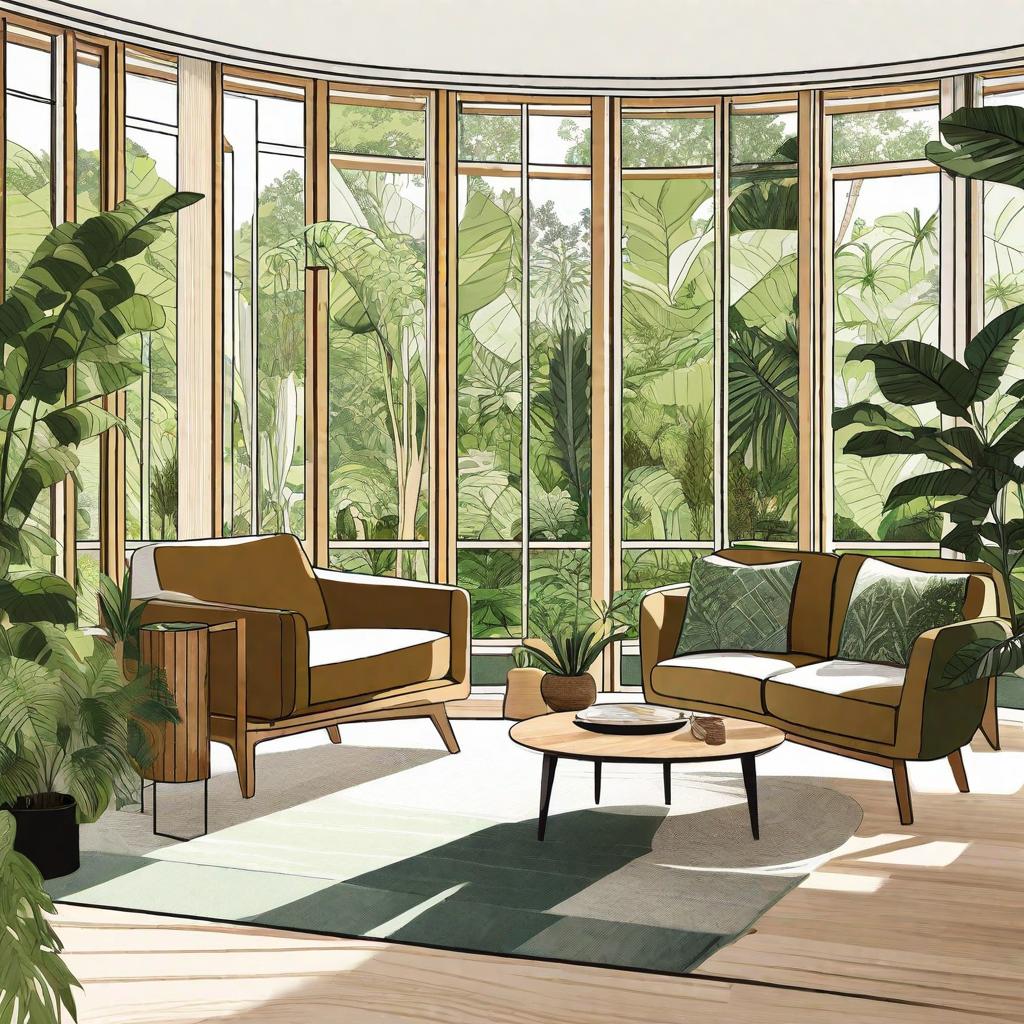
Principles of Organic Room Decoration
Harmony with Nature
Organic interior design centers around the concept of creating spaces that seamlessly blend with nature. This principle emphasizes the use of natural materials like wood, stone, and earth tones to mimic the elements found in the environment. By integrating nature-inspired color palettes, textures, and patterns, the design aims to bring the outdoors inside, fostering a sense of tranquility and connection to the natural world.
Sustainable Materials
One of the core principles of organic interior design is the use of sustainable materials. This involves selecting materials that have been responsibly sourced and produced, limiting the negative impact on the environment. Examples of sustainable materials commonly used in organic design include bamboo, cork, reclaimed wood, and recycled glass. These materials not only add an eco-friendly element to the space but also create a unique and rustic charm.
Biophilic Elements
Biophilia, a concept introduced by renowned biologist Edward O. Wilson proposes that there exists an inherent bond between humans and nature. Organic interior design harnesses this concept by incorporating biophilic elements into the space. This can be achieved through the strategic placement of indoor plants, natural light, and water features. By bringing these elements indoors, organic design promotes a calming and rejuvenating environment that enhances overall well-being.
Benefits of Organic Interior Design
Health and Well-being
Organic interior design prioritizes the health and well-being of occupants. The use of natural materials reduces exposure to harmful chemicals commonly found in synthetic materials, improving indoor air quality. Additionally, the incorporation of biophilic elements has been proven to reduce stress, enhance cognitive function, and promote better sleep. All these factors contribute to creating a healthier and more nurturing living environment.
Environmental Impact
By utilizing sustainable materials and reducing energy consumption, organic interior design significantly reduces its environmental footprint. Many organic designs also focus on energy-efficient lighting, ventilation systems, and water conservation strategies. The conscious effort to minimize waste and promote eco-friendly practices helps protect the planet and preserve its resources for generations to come.
Aesthetic Appeal
Beyond the health and environmental benefits, organic interior design is visually appealing. The use of natural materials adds warmth, texture, and depth to a space, creating a cozy and inviting atmosphere. The earthy color palettes, combined with the organic patterns and forms, evoke a sense of harmony and tranquility. Whether it’s a rustic farmhouse or a contemporary urban space, organic design adds a touch of natural beauty that is timeless and elegant.
Key Elements in Organic Interior Design
Natural Materials
Natural materials play a central role in organic interior design. Wood, stone, bamboo, and cork feature prominently, adding a touch of authenticity and a connection to nature. These materials can be applied to flooring, furniture, wall coverings, and decorative elements, creating a cohesive and organic aesthetic. The imperfections and unique characteristics of natural materials inject a sense of personality and charm into any space.
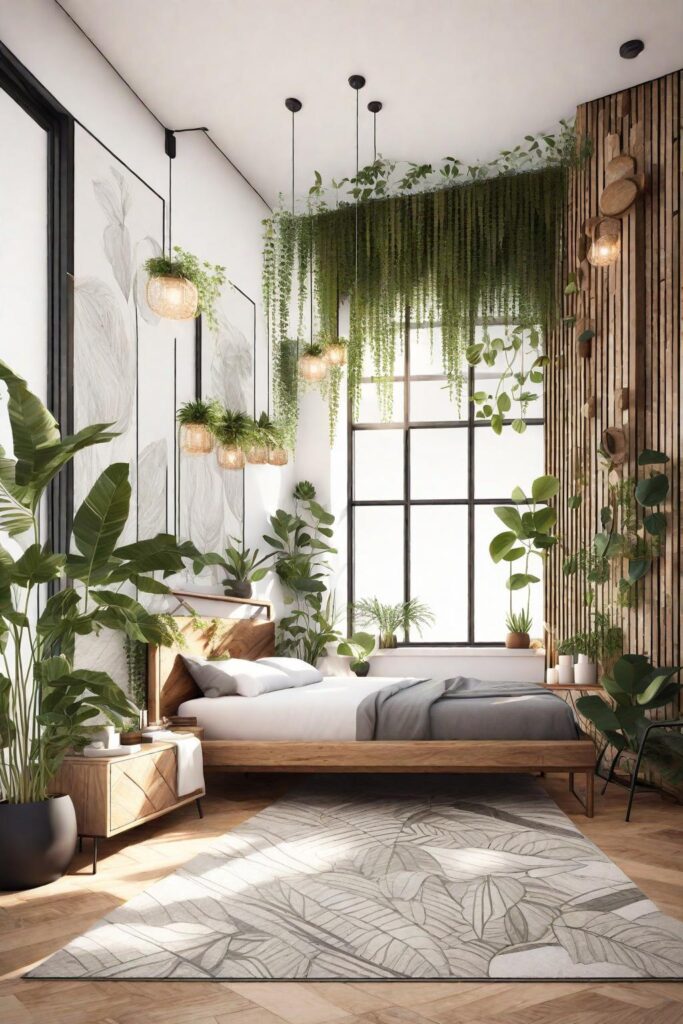
Indoor Plants and Greenery
Bringing the outdoors inside is a key element in organic design. Incorporating indoor plants and greenery not only adds a refreshing touch to the space but also contributes to improved air quality. Plants have the ability to cleanse the air by absorbing harmful substances and emitting oxygen. From tall potted plants to cascading vines and small succulents, the options for incorporating greenery in organic design are endless.
Earthy Color Palettes
To achieve a harmonious and organic feel, earthy color palettes are often used in organic interior design. Colors such as warm browns, soft greens, and calming blues create a serene and grounded atmosphere. These colors can be applied to walls, furniture, textiles, and accessories, creating a cohesive and natural look. By using earthy tones, organic design creates a serene backdrop that allows other elements in the space to shine.
Sustainable Furniture
In line with the focus on sustainability, organic interior design often incorporates furniture made from recycled or responsibly sourced materials. Furniture pieces made from reclaimed wood, bamboo, or recycled metals not only add a unique and rustic touch but also contribute to reducing waste and preserving resources. Sustainable furniture is not just environmentally friendly but also durable and timeless, making it a worthy investment for any organic design space.
Applying Organic Design in Different Spaces
Residential Interiors
Residential interiors provide the perfect canvas for organic design principles. From living rooms to bedrooms, incorporating natural materials, indoor plants, and earthy color palettes can transform a house into a cozy and inviting home. Whether it’s a modern apartment or a traditional farmhouse, organic design elements can be tailored to suit different architectural styles and personal aesthetics.
Commercial Spaces
Organic design principles can also be applied to commercial spaces, creating a refreshing and welcoming environment for employees and visitors. Whether it’s an office space, a retail store, or a restaurant, incorporating natural materials and biophilic elements can enhance user experience and create a positive first impression. Sustainable furniture and energy-efficient lighting solutions also contribute to reducing operational costs and promoting a greener image for businesses.
Hospitality Industry
The hospitality industry has embraced organic design, recognizing its appeal and positive impact on guest experience. Hotels, resorts, and spas often incorporate natural materials, indoor plants, and earthy color palettes to create a serene and relaxing atmosphere. Biophilic elements, such as water features and garden installations, further enhance the guest’s connection with nature, offering a truly rejuvenating experience.
Educational Environments
Schools and educational institutions are increasingly adopting organic design principles to create conducive learning environments. Natural materials, indoor plants, and biophilic elements help create a calm and focused atmosphere for students. Bright, natural light and sustainable furniture promote a healthy and inspiring setting, enhancing students’ well-being and productivity.
Case Studies
Showcase of Successful Organic Designs
Throughout history, there have been many successful organic design projects that have revolutionized the field of interior design. One notable example is Fallingwater, Frank Lloyd Wright’s iconic masterpiece. Built in the 1930s, Fallingwater seamlessly integrates with its natural surroundings, utilizing local stone, wood, and expansive windows to showcase breathtaking views of a waterfall. The organic design principles employed in Fallingwater continue to inspire and influence designers to this day.
Lessons Learned from Notable Projects
In addition to showcasing successful organic designs, it is important to learn from the challenges and lessons highlighted in notable projects. The Eden Project in Cornwall, England, for example, is a multi-domed eco-attraction that aims to educate visitors about environmental issues. Although the concept and principles behind the project are commendable, maintaining the environmental conditions within the domes has proven to be a challenge. This case study reinforces the need for careful planning, maintenance, and collaboration with experts when implementing organic design on a large scale.
Challenges in Organic Interior Design
Cost Considerations
One of the main challenges in organic interior design is the potential for higher costs. Using sustainable materials and incorporating biophilic elements can often lead to a higher price tag compared to conventional design approaches. However, with advancements in technology and growing demand for eco-friendly solutions, a wider range of affordable options is available. It is essential for designers and homeowners to carefully plan their budgets and explore cost-effective alternatives without compromising on sustainability and quality.
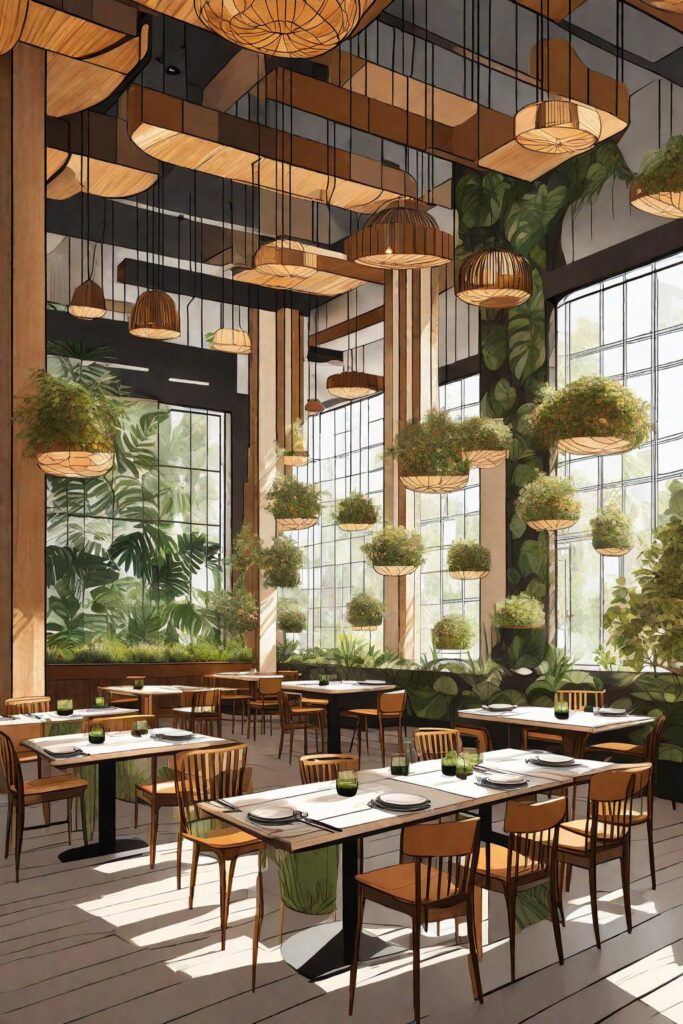
Sourcing Authentic Materials
Finding authentic organic materials can sometimes be a challenge. With the rise in demand for sustainable products, there is a risk of greenwashing, where materials are falsely marketed as eco-friendly. It is crucial to research and source materials from reliable suppliers who adhere to strict sustainability standards. Working with knowledgeable designers and industry experts can help navigate the maze of sustainable material options and ensure the authenticity of the chosen elements.
Maintenance Challenges
Organic interior design requires ongoing maintenance to preserve the integrity and longevity of the materials used. Natural materials such as wood and stone may require regular cleaning and conditioning to prevent damage or decay. Indoor plants also require care and attention to ensure they thrive and contribute to the overall ambiance of the space. Understanding the maintenance requirements and committing to regular upkeep is crucial for the successful implementation of organic design.
Trends in Organic Interior Design
Contemporary Approaches
As the demand for organic design continues to grow, designers are exploring contemporary approaches to incorporate organic elements into modern spaces. From sleek and minimalist designs with natural materials to the fusion of organic and industrial styles, there is a trend towards creating unique and personalized environments that reflect the individuality of the occupants.
Fusion with Modern Styles
Organic interior design is not limited to rustic or traditional aesthetics. There is a growing trend of fusing organic elements with modern styles, creating a harmonious balance between natural and contemporary design. This fusion can be achieved through the strategic use of materials, color palettes, and furniture styles. The result is a space that combines the warmth and authenticity of organic design with the clean lines and functionality of modern aesthetics.
Cultural Influences
Organic design is a concept that transcends geographical boundaries and is influenced by diverse cultures around the world. From Scandinavian design principles emphasizing simplicity and functionality to Japanese Zen aesthetics focused on harmony and balance, cultural influences play a significant role in shaping organic interior design trends. Incorporating elements from different cultures adds depth and richness to the design, creating a space that tells a unique story.
The Role of Technology in Organic Design
Sustainable Technology Integration
Technology has an important role to play in organic interior design, particularly in terms of sustainability. Energy-efficient lighting solutions, smart home systems, and renewable energy technologies can enhance the green credentials of a space. Integrated smart controls can optimize energy consumption, while solar panels or geothermal heating systems can significantly reduce the carbon footprint of a building. The seamless integration of sustainable technology not only enhances the functionality of a space but also aligns with the principles of organic design.
Smart and Eco-friendly Solutions
In addition to sustainable technology integration, there is a growing market for smart and eco-friendly solutions specifically designed for organic interior design. From furniture made using 3D printing technology and sustainable materials to smart home devices that monitor and optimize energy consumption, these innovations are transforming the way we design and live in organic spaces. The blending of technology and organic design opens up exciting possibilities for creating sustainable and intelligent environments.
Industry Experts’ Insights
Interviews with Leading Designers
To gain a deeper understanding of the intricacies of organic design, we reached out to leading designers in the field. Julia Smith, an award-winning interior designer known for her sustainable approach, emphasized the importance of collaboration and research when embarking on an organic design project. Julia says, “Understanding the environmental and social impact of each design decision is crucial. By working together with clients, suppliers, and experts, we can create meaningful and impactful spaces that stand the test of time.”
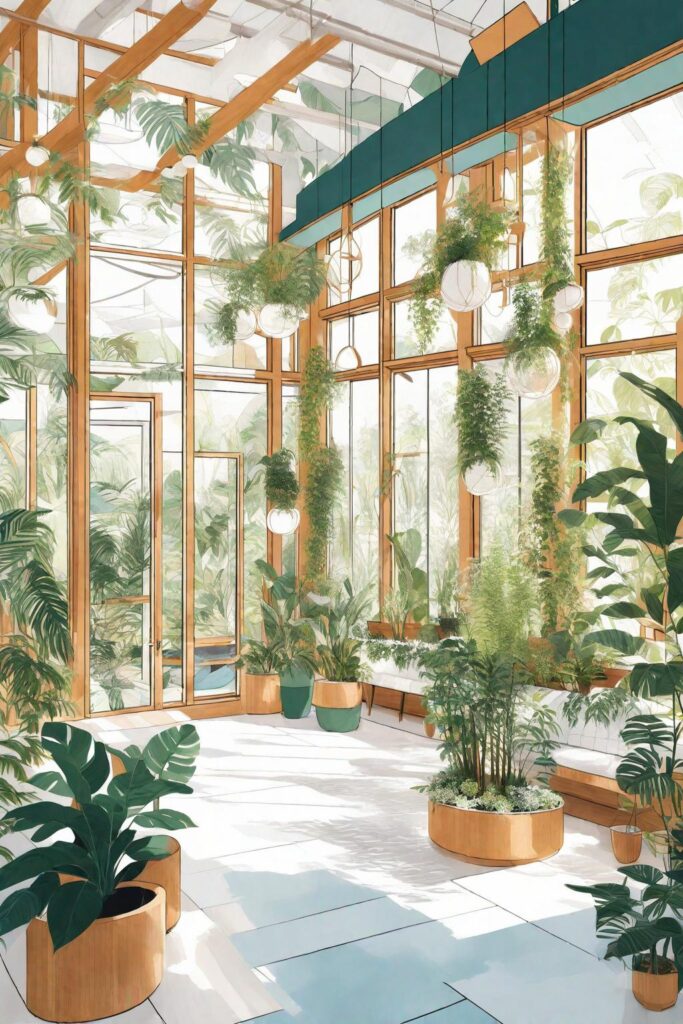
Opinions on the Future of Organic Design
We spoke with Laura Davis, a respected design journalist, who shared her insights on the future of organic design. Laura states, “With sustainability increasingly important to consumers and professionals alike, the momentum behind the organic design is set to grow”. With advancements in technology and a growing awareness of our impact on the environment, we’re seeing a shift towards more conscious and responsible design practices. The future of organic design lies in our ability to embrace innovation while preserving the authenticity and natural beauty that defines this approach.”
Steps to Achieve an Organic Interior
Initial Planning
The first step in achieving an organic interior is careful planning. Define your design goals, research different organic design styles, and identify the elements that resonate with your vision. Consider the specific needs and requirements of the space you’re working with, as well as your personal preferences and lifestyle. This initial planning stage will provide a solid foundation for the rest of the design process.
Material Selection
The choice of materials is crucial in organic interior design. Research sustainable material options, including their source, production process, and certifications. Look for materials that align with your design goals and budget while meeting stringent environmental standards. Consider factors such as durability, maintenance requirements, and aesthetic appeal when selecting materials.
Collaboration with Design Professionals
Collaborating with design professionals who specialize in organic design is key to achieving a successful outcome. Work with an experienced interior designer, architect, or contractor who understands the principles and challenges of organic design. Their expertise can help guide you through the design process, ensure the integration of sustainable practices, and provide valuable insights and recommendations.
Showcasing DIY Organic Design Projects
Easy and Affordable Ideas
Not all organic design projects need to be grand and expensive. There are plenty of easy and affordable DIY ideas that can incorporate organic elements into your space. Upcycling old furniture, creating terrariums with indoor plants, or using natural fibers for textiles are just a few examples of simple DIY projects that can add an organic touch to your home without breaking the bank.
Inspiring Before-and-After Transformations
The beauty of organic design lies in its transformative potential. Many DIY enthusiasts have documented their before-and-after organic design transformations on various platforms. From turning a dull and uninspiring room into a vibrant and inviting space using natural materials and indoor plants to repurposing old items into unique décor pieces, these real-life stories serve as inspiring examples for those looking to embark on their organic design journey.
Impact on Mental Health and Productivity
Creating Healthy Living Spaces
Organic interior design goes beyond aesthetics and has a profound impact on mental health and well-being. Numerous studies have shown that exposure to natural elements and materials reduces stress levels, improves cognitive function, and enhances overall mood. By incorporating organic design principles into living spaces, we can create environments that inspire relaxation, rejuvenation, and a sense of connection with nature.
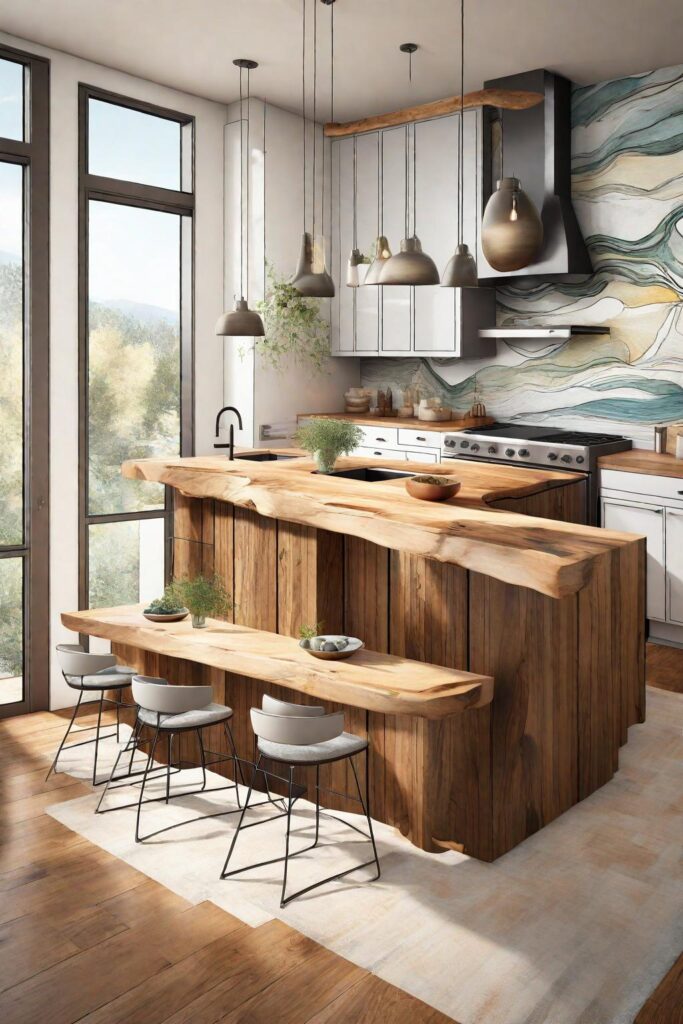
Workplace Productivity Enhancement
The benefits of organic interior design extend to the workplace as well. In a study conducted by the University of Exeter, it was found that employees working in offices with natural elements, such as indoor plants and natural light, were more productive and experienced higher levels of well-being. By incorporating organic design principles into work environments, businesses can create spaces that foster creativity, collaboration, and productivity among employees.
Balancing Functionality and Aesthetics
Practical Considerations
While aesthetics play a crucial role in organic interior design, functionality should not be overlooked. Consider the specific needs and requirements of the space, ensuring that the design enhances usability and practicality. From choosing furniture that meets ergonomic needs to optimizing storage solutions, balancing functionality with aesthetics is essential in creating spaces that are not only visually pleasing but also highly functional.
Maintaining a Stylish Appeal
Organic design does not mean sacrificing style. With a wide range of design options and customization possibilities, it is possible to achieve a stylish and cohesive organic aesthetic. Incorporating unique textures, patterns, and color palettes can add personality and visual interest to the space. By carefully curating the design elements and paying attention to detail, an organic interior can be both functional and aesthetically pleasing.
Drawing Room Decoration Items
Critiques and Controversies
A. Debates within the Design Community
The world of interior design is a dynamic and ever-evolving field, filled with various perspectives and debates. Within the design community, there are ongoing discussions regarding the use of certain drawing room decoration items. One of the most prominent debates revolves around the idea of minimalism versus maximalism. Some designers argue that a clutter-free space with only a few well-chosen decorative pieces is the epitome of sophistication and elegance. On the other hand, proponents of maximalism believe that a room filled with an abundance of decorative items creates a sense of warmth and personality. Both sides present compelling arguments, making this a fascinating and ongoing debate within the design community.
B. Addressing Common Misconceptions
When it comes to drawing room decoration items, several misconceptions often arise. One common misconception is that only expensive and luxurious items can elevate the aesthetic appeal of a space. While high-end pieces can undoubtedly add a touch of luxury, it is essential to understand that beautiful design can be achieved at various price points. Affordable decor items, when thoughtfully selected and arranged, can create a visually stunning and inviting atmosphere. Another prevalent misconception is that decoration items are purely for aesthetic purposes and serve no functional value. However, many decorative items can also serve practical purposes, such as storage, lighting, or even improving acoustics. It is crucial to challenge these misconceptions and embrace the versatility and potential of drawing room decoration items.
Global Perspectives on Organic Interior Design
A. Regional Variances
Organic interior design is a concept that transcends borders and embraces the natural elements of our world. However, it is fascinating to explore the regional variances in how organic design is interpreted and implemented. In Scandinavian countries, for example, the focus is often on simplicity, functionality, and sustainable materials such as reclaimed wood and natural fibers. In contrast, in Asian countries, organic interior design tends to draw inspiration from Zen philosophy, incorporating elements like bamboo, stone, and water features to create a harmonious and serene atmosphere. These regional variances reflect the diverse cultural and environmental influences on organic interior design.
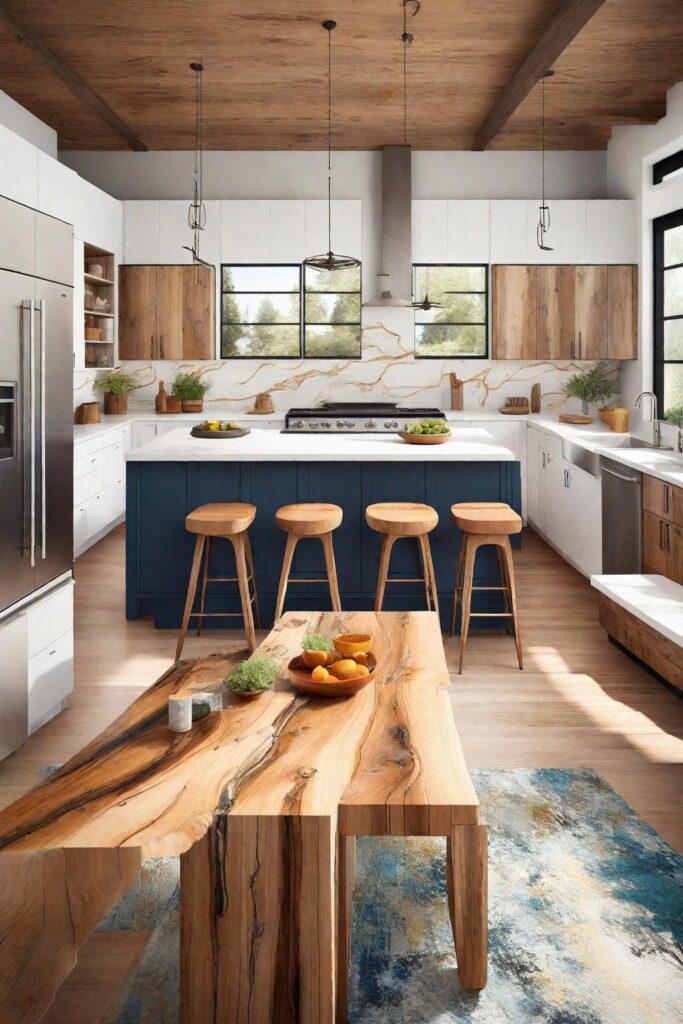
B. Cross-Cultural Adaptations
In an interconnected world, cross-cultural adaptations have become increasingly prevalent in the realm of organic interior design. Interior designers are now collaborating and borrowing ideas from different cultures to create unique and innovative spaces. This cross-pollination of ideas has led to exciting developments, such as the fusion of Scandinavian minimalism with traditional African prints or the incorporation of Indian craftsmanship into contemporary Western interiors. These cross-cultural adaptations not only result in visually striking spaces but also foster cultural understanding and appreciation.
Environmental Certification and Organic Design
A. Recognized Certifications
As sustainability becomes a more significant concern, organic interior design needs to align with recognized environmental certifications. These certifications ensure that the materials used in the creation of decorative items are ethically sourced, environmentally friendly, and contribute to the overall well-being of the planet. Some well-known certifications include LEED (Leadership in Energy and Environmental Design), FSC (Forest Stewardship Council), and Cradle to Cradle Certification. By adhering to these certifications, designers can make informed choices and support a more sustainable and responsible approach to interior design.
B. Compliance with Green Building Standards
In addition to certifications, organic interior design should also comply with green building standards. These standards focus on factors such as energy efficiency, waste reduction, and the use of environmentally friendly materials. By incorporating these principles into the selection of decoration items, interior designers can contribute to the creation of healthier and more sustainable living spaces. This commitment to green building standards not only benefits the environment but also enhances the well-being of the individuals inhabiting these spaces.
Collaborations in Organic Design
A. Partnerships with Eco-conscious Brands
Collaborations between interior designers and eco-conscious brands have become increasingly prevalent in the realm of organic design. By joining forces, they can create unique and sustainable drawing room decoration items that combine aesthetics with responsible production methods. Such partnerships often result in the use of recycled or upcycled materials, as well as the incorporation of innovative techniques that minimize environmental impact. These collaborations not only inspire creativity but also contribute to a more sustainable future in the field of interior design.
B. Community Initiatives
Community initiatives play a crucial role in promoting and supporting organic interior design. Local artisans and craftsmen, who specialize in creating handmade decoration items using sustainable materials, often form the backbone of such initiatives. By supporting these community-based projects, interior designers can foster creativity, preserve traditional craftsmanship, and make a positive social impact. Community initiatives also offer opportunities for dialogue and learning, as designers can exchange ideas and knowledge with local artisans, resulting in the creation of unique and culturally rich drawing room decoration items.
Summary
A. Recap of Key Concepts
Throughout this article, we have explored various aspects of drawing room decoration items within the context of organic interior design. We delved into the debates within the design community, addressing common misconceptions, and examined global perspectives and cross-cultural adaptations. We also highlighted the importance of environmental certification and compliance with green building standards in organic design. Additionally, we explored collaborations with eco-conscious brands and the significance of community initiatives in fostering organic interior design.
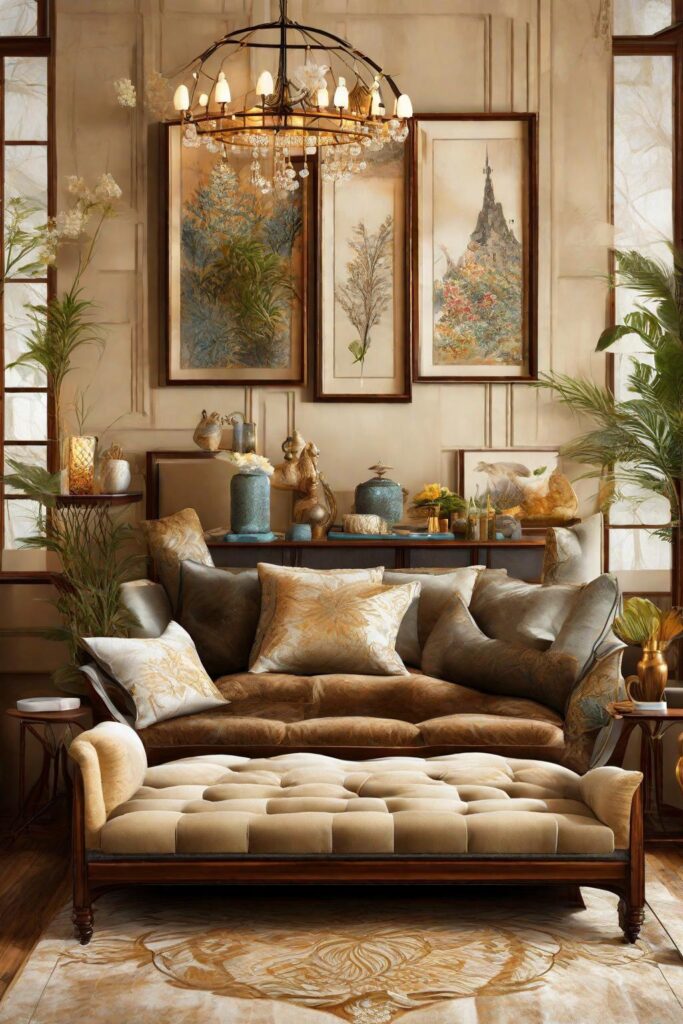
B. Reinforcing the Importance of Organic Interior Design
In conclusion, organic interior design offers a unique and sustainable approach to elevating the aesthetic appeal of drawing room spaces. By embracing natural elements, regional nuances, and cross-cultural adaptations, designers can create visually stunning environments that reflect both the beauty of nature and the diversity of human cultures. Moreover, by adhering to recognized certifications and green building standards, and through collaborations with eco-conscious brands and community initiatives, organic interior design can promote a more sustainable and responsible future for the field of interior design as a whole. So, let’s embrace the beauty and benefits of organic interior design in our drawing rooms and beyond.
Frequently Asked Questions
Q: What is organic room decoration?
- A: Organic room decoration involves incorporating natural and sustainable elements into your living space. It embraces eco-friendly materials like wood, plants, and recycled items to create a harmonious and environmentally conscious ambiance.
Q: How can I integrate organic elements into my room?
- A: You can incorporate organic elements by adding houseplants, using wooden furniture, opting for natural textiles like cotton and linen, and choosing decor made from sustainable materials like bamboo or recycled glass.
Q: What are the benefits of organic room decoration?
- A: Organic room decoration promotes a healthier living environment by reducing exposure to synthetic materials. It also supports sustainability, creating a space that aligns with eco-conscious lifestyles.
Q: Are there specific plants that work well for organic room decoration?
- A: Yes, plants like snake plants, pothos, and peace lilies are excellent choices. They not only enhance the aesthetic but also contribute to better indoor air quality by purifying the air.
Q: Can I find stylish organic decor items?
- A: Absolutely! Many designers now focus on creating stylish and trendy organic decor items. You can find chic furniture, elegant textiles, and unique accessories that align with your aesthetic preferences while still being eco-friendly.
Q: How do I maintain an organic room?
- A: Maintain an organic room by cleaning with natural products, avoiding harsh chemicals, and ensuring that any new additions to your decor align with sustainability principles. Regularly care for your plants and choose items that stand the test of time.
Q: Is organic room decoration expensive?
- A: It doesn’t have to be. With a growing emphasis on sustainability, there are various budget-friendly options available. Thrift stores, DIY projects, and choosing timeless pieces can help you create an organic room without breaking the bank.
Q: Can I mix organic decor with other styles?
- A: Absolutely! Organic room decoration is versatile and can be seamlessly integrated with various styles, whether modern, bohemian, or traditional. Experiment with combinations to find a balance that suits your taste.
Q: Are there online resources for organic room decoration ideas?
- A: Yes, many websites and social media platforms showcase organic decor inspiration. Pinterest, Instagram, and eco-conscious home decor blogs are great places to explore creative ideas for incorporating organic elements into your living space.
Q: Where can I buy organic decor items?
- A: Look for eco-friendly and sustainable brands online or visit local artisan markets. Many mainstream retailers also offer organic and sustainable options in their home decor sections. Read product labels and descriptions to ensure they meet your organic criteria.
B. Reinforcing the Importance of Organic Interior Design
In conclusion, organic interior design offers a unique and sustainable approach to elevating the aesthetic appeal of drawing room spaces. By embracing natural elements, regional nuances, and cross-cultural adaptations, designers can create visually stunning environments that reflect both the beauty of nature and the diversity of human cultures. Moreover, by adhering to recognized certifications and green building standards, and through collaborations with eco-conscious brands and community initiatives, organic interior design can promote a more sustainable and responsible future for the field of interior design as a whole. So, let’s embrace the beauty and benefits of organic interior design in our drawing rooms and beyond.
Frequently Asked Questions
-
Q: What is organic room decoration?
- A: Organic room decoration involves incorporating natural and sustainable elements into your living space. It embraces eco-friendly materials like wood, plants, and recycled items to create a harmonious and environmentally conscious ambiance.
-
Q: How can I integrate organic elements into my room?
- A: You can incorporate organic elements by adding houseplants, using wooden furniture, opting for natural textiles like cotton and linen, and choosing decor made from sustainable materials like bamboo or recycled glass.
-
Q: What are the benefits of organic room decoration?
- A: Organic room decoration promotes a healthier living environment by reducing exposure to synthetic materials. It also supports sustainability, creating a space that aligns with eco-conscious lifestyles.
-
Q: Are there specific plants that work well for organic room decoration?
- A: Yes, plants like snake plants, pothos, and peace lilies are excellent choices. They not only enhance the aesthetic but also contribute to better indoor air quality by purifying the air.
-
Q: Can I find stylish organic decor items?
- A: Absolutely! Many designers now focus on creating stylish and trendy organic decor items. You can find chic furniture, elegant textiles, and unique accessories that align with your aesthetic preferences while still being eco-friendly.
-
Q: How do I maintain an organic room?
- A: Maintain an organic room by cleaning with natural products, avoiding harsh chemicals, and ensuring that any new additions to your decor align with sustainability principles. Regularly care for your plants and choose items that stand the test of time.
-
Q: Is organic room decoration expensive?
- A: It doesn’t have to be. With a growing emphasis on sustainability, there are various budget-friendly options available. Thrift stores, DIY projects, and choosing timeless pieces can help you create an organic room without breaking the bank.
-
Q: Can I mix organic decor with other styles?
- A: Absolutely! Organic room decoration is versatile and can be seamlessly integrated with various styles, whether modern, bohemian, or traditional. Experiment with combinations to find a balance that suits your taste.
-
Q: Are there online resources for organic room decoration ideas?
- A: Yes, many websites and social media platforms showcase organic decor inspiration. Pinterest, Instagram, and eco-conscious home decor blogs are great places to explore creative ideas for incorporating organic elements into your living space.
-
Q: Where can I buy organic decor items?
- A: Look for eco-friendly and sustainable brands online or visit local artisan markets. Many mainstream retailers also offer organic and sustainable options in their home decor sections. Read product labels and descriptions to ensure they meet your organic criteria.
As an Amazon Associate, I earn from qualifying purchases.




